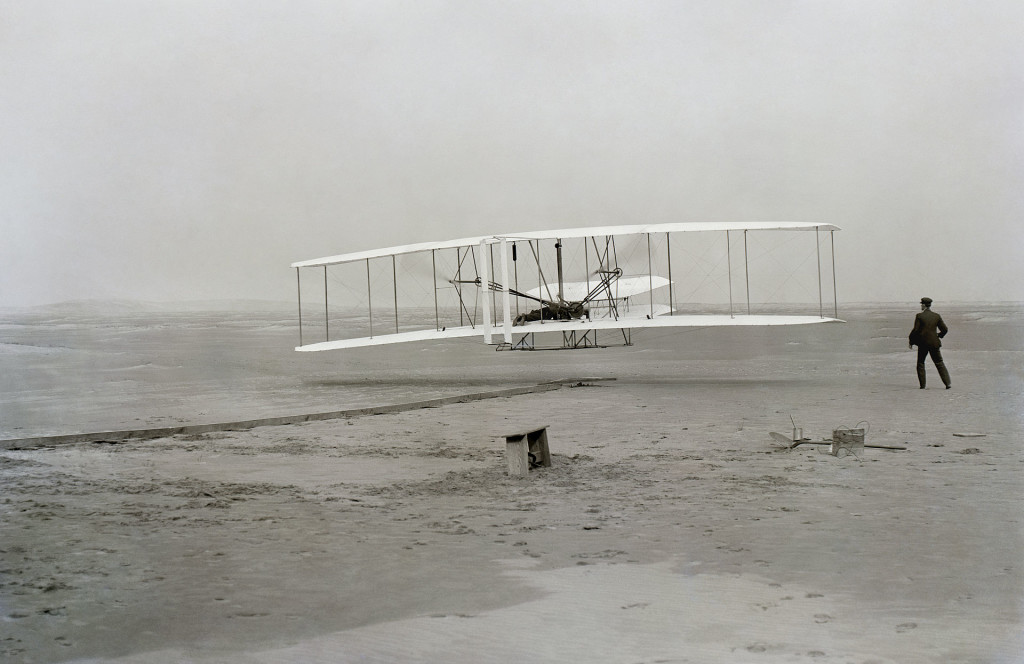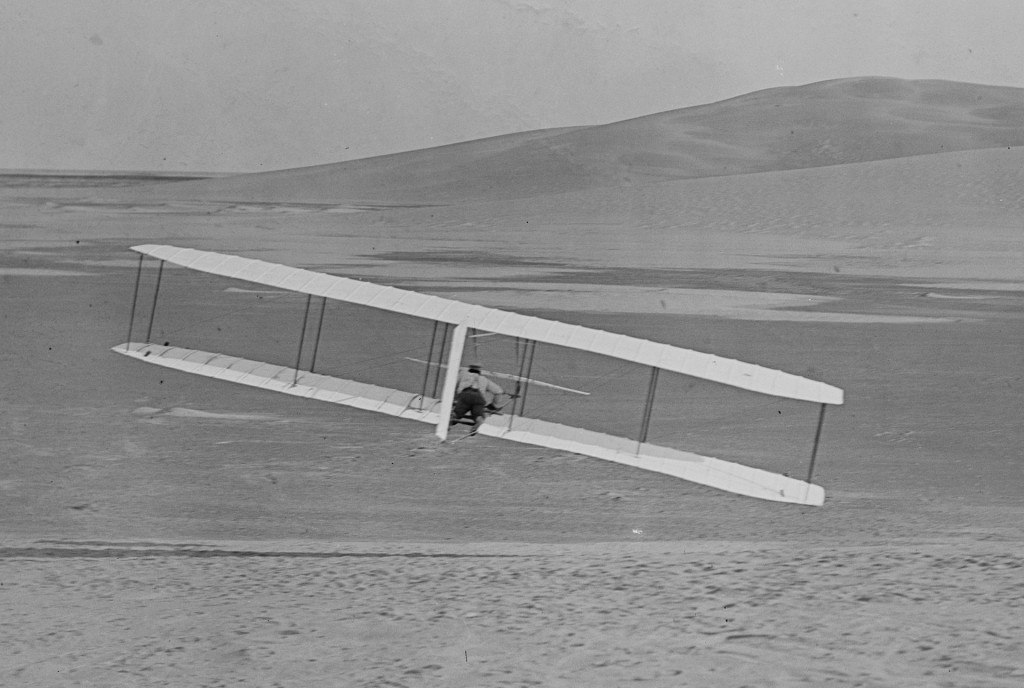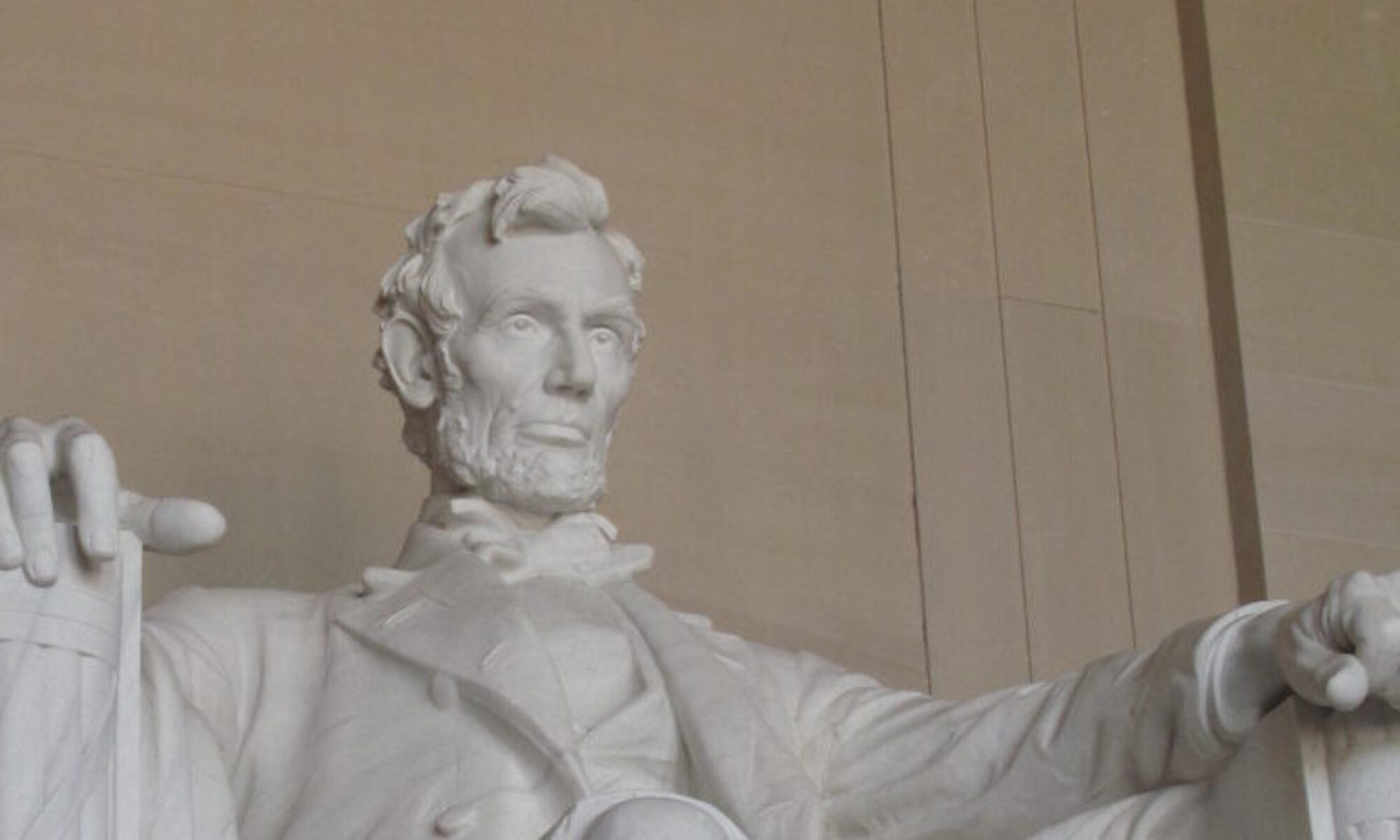
At the Smithsonian National Air and Space Museum in Washington DC, a fragile looking craft is nestled among the imposing rocketry, massive jets, and space capsules that catalogue man’s drive to free himself from his earthbound status and soar like the hawks and eagles. Made of spruce wood and muslin fabric, crisscrossed by bicycle wire, and supported with landing sleds, it looks like a glorified box kite. It is, though, the 1903 Flyer, the machine developed by two insightful bicycle mechanics from Ohio named Wright – by which all the other craft became possible. It is the alpha craft of sustained, controlled flight, and there is no more important relic in the museum.
The story of how this craft came to be, and the special nature of the geniuses behind its development, is the subject of David McCullough’s latest book, The Wright Brothers, and once again, McCullough has brought us a tremendous read. The two time Pulitzer Prize winning historian, now 81 years of age and himself a national treasure, continues to refine his biographic look at epic Americans, the real people behind the larger than life stories, and the thread of ‘Americanism’ that makes them an ongoing recognizable part of the nation’s unique story. McCullough’s Wright Brothers, are the Americans described by Alexis De Tocqueville – religious, modest, small town diamond-hard workers, who are humble, reserved, yet proud and capable of great vision. Their success is distinctly American, taking the hard truths of difficult problems, making them their own, and inevitably conquering them, when so many others with more advantage failed. McCullough, like the careful craftsman he is, doesn’t try to tell the story through others, but relies on the brothers’ own notes and letters. McCullough is a storyteller, not a psychoanalyst, avoiding the modern deviations and contrivances of modern biographers, who pretend to be able to understand their subjects’ states of mind and prejudices. McCullough does not ask you to like or not like The Wright Brothers personalities, only to follow their unbending will as they meticulously conquer earth bound gravity, and foster a revolution in man’s place on this planet. McCullough recognizes better than most, America’s unique philosophic foundation centers the idea that opportunity should abound for all men equally regardless of their individual circumstances. From such cauldrons of self confidence, unfettered opportunity and an inherent industrious nature, America has produced its Lincolns, Edisons, Reagans, and Wrights.
The Wright brothers, Wilbur and the fours years younger Orville were born just after the American Civil War. in which the nation was directed toward rebuilding and focusing on its future. This was the age of civilizing the hostile and unknowable world. Railroads conquered the difficult terrain to connect the continent. The light bulb brought activity and awareness to the dark hours, and electricity heretofore unharnessed power. The combustion engine drove the economy, reducing distances, powering agriculture and eliminating hunger, and providing work for millions. The Wrights were witnesses, and assumed a natural providence to it all. Their father, a bishop of one of the many sects of the Protestant wave of individual integrity and initiative that underlies the revolution, engendered in his children the balancing act of personal humility and faith, and competitive need to contribute to the civilizing culture any way God led them. Achieving the broad education of life as well as in depth foundations that high school provided at that time, the boys were confident they had the tools to understand and self educate as needed, and never sought a college education. They applied their intuition and industriousness first to publishing, then transportation for individuals through a successful bicycle business, all the while, absorbing the world around them. When hearing of the attempts by others to solve the millennia long quest to conquer gravity with air travel, the passive transport by hot air balloons restricted by the vagaries of wind direction did not appeal to them so much as the infinitely more difficult concept of individually controlled flight – flight occurring at the spontaneous whim and the premeditated direction of the individual desiring it.
The Wright brothers took to solving the problem of flight much in the way Edison undertook his creations – insight was created by logically understanding the failures that would lead to success. Having read much of the available literature on aeronautics, they determined success lay instead in their own meticulous build of a knowledge of flight from personal observation. Hundreds of experiments and thousands of hours of unreimbursed work followed, starting with observations of birds and their tactics of flight, kites, then gliders, materials and environments that might be conducive to flight. As Wilbur looking back at the process of discovery put it, the key intuition they brought to understanding bird flight others failed to grasp was the process of dynamically controlling flight, not anatomical characteristics of birds conducive to flight. In other words for Wilbur, it was about the bird, not the wing. For the Wright brothers, the human pilot would have to be the bird, making continuous flight adjustments, not the passive inhabitant on a flying wing. Progressively, they combined their experiments into larger and larger gliders, that took the science of aerodynamics and added the control of pitch, roll and yaw to the pilot through the capacity to “induce” the wing to respond to the need by warping to turn or the rudder elevator to lift or dive.
The experiments lead to a glider craft large enough to support a human directing the glider, and the brothers realized they would need a laboratory where they could, unmolested, make the mistakes and adjustments and test them repetitively in ideal conditions. The key ingredient for gliders was wind, and the most predictable continuous wind on a massively large unimpeded space allowing for soft landing failures was oceanside. They discovered the outer banks of North Carolina through the US Weather Bureau, and the result was Kitty Hawk, North Carolina and the dunes of Kill Devil Hills the launching ground to the immense flat beaches of the outer banks that would be their laboratory. In 1901 and 1902, the brothers performed glider experiments that led to sustained flight and impressive control, but when the wind died, the spontaneous flight died with it. As noted by others, a barn door could ‘fly’ if projected from a height. It would only be recognized to be flight if the barn door once projected towards the ground had the means of changing direction and restoring itself to height again, and reproducibly. The ultimate step would be powered flight, directed by the individual, not the elements, and by 1903, the Wright brothers felt they were there.

The brothers were not twins, but worked so intimately together over a lifetime, that they seemed like a single organism. They studied their experiments together, fought over results together, and suffered in the harsh conditions of Kitty Hawk together. The one thing they didn’t do together was fly, for the dangerous conditions were such that they wanted assurance that at least one of them would be able to carry on if there was a tragedy in the course of flight. Progressive work on the problems of powered flight, including the means of propulsion, lead to advances in craft design including use of a wind tunnel to test, unique propeller design, and a light weight first of its kind aluminum engine to drive the propellers. With the moment of powered flight seemingly close in December, 1903, the brothers flipped a coin as to who would be the pioneering pilot, and Wilbur won. The first attempt on December 14th, 1903 by Wilbur was unsuccessful due to conditions with an aborted flight of three seconds causing minor damage to the craft. Unfailingly humble and consistent in their approach, the next acceptable flight environment was on December 17th, 1903, this time with Orville at the controls. Wilbur intelligently positioned a camera to record a successful flight and an assistant, John Daniels, snapped the shutter that froze in time one of the most famous moments in history, the photo seen at the head of this article. In the first recorded powered flight under directed control, Orville travelled 120 feet in 12 seconds, a speed of 6.8 miles an hour, at 1035 am, landing safely. The brothers alternated 3 more flights that day, the longest Wilbur’s 59 second flight over 800 feet that cemented Kitty Hawk as the birthplace of airplanes.
With the tall tales of so many pretenders, the tragic and at times pathetic failures of so many more educated and infinitely more financed, the immense achievement of the brothers took some time to become known and believed. Their innate desire for privacy and isolation didn’t help, but their confidence and pride in their accomplishment eventually led to opportunities to show others, and the fact that flight had been conquered by two obscure bicycle mechanics seemed to fuel the achievement internationally. Over the next years the Wright brothers and their updated Flyers would amaze international audiences of thousands and lead to record after broken record of sustained and controlled flight that was the envy of many other designers. More importantly, the achieving the unachievable cracked the ice forever on creativity, and within ten years the capacities of flight were exponentially expanded, to hours of flight, thousands of feet of elevation, and hundreds of miles an hour. Materials changed, uses changed, propulsion changed, and the fragile little flyer that lifted of the dune at Kill Devil Hills in December, 1903, soon became unrecognizable. The principles the Wright brothers had meticulously revealed, however, remain the universal foundation of all human flight, and are still apparent in the pilot seated in the ultralight craft of today.
The Wright’s story does not end in perfect glory and McCullough does not belabor the foibles of human pride and tragedy that interfere with a perfect ending, but Orville at least lived to see the concept of safe flight turned into a routine event for average people. The story of the providential shift of history achieved by unlikely people from unexpected directions has been the beautiful outcome of the American experiment, and the Wright brothers are one more example of what happens when people determine their own destiny, and drive their own ambitions. We are steadily heading to a country that wants to foster communal concepts of equal outcome, not equal opportunity, and the result will be millions of lost creative attempts to advance civilization. We don’t need a country that tries to determine how many bicycle mechanics are needed to best serve society’s needs. We need a society that stands back and allows bicycle mechanics, if they desire, to try and soar like eagles.
